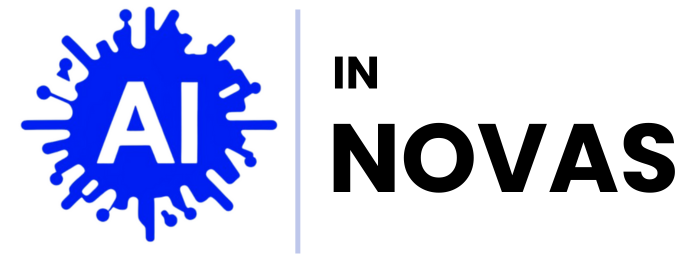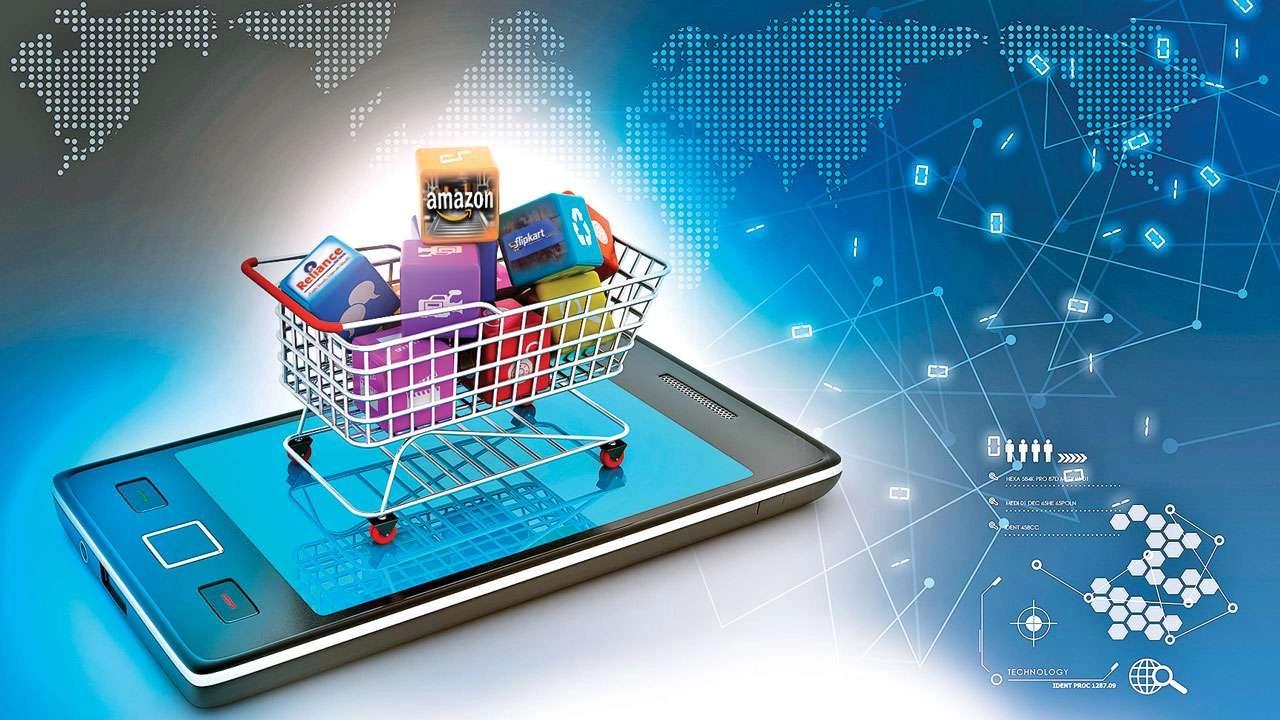The Growth Surge: An Overview of e-commerce-market-in-poland-in-2023″ title=”Unlocking Potential: Exploring the Booming E-Commerce Market in Poland in 2024″>Poland‘s E-Commerce Market Landscape
In recent years, Poland’s e-commerce market has seen remarkable transformation, fueled by a surge in online shopping and digital transactions. As a part of the larger digital economy, the Polish e-commerce sector has become a focal point of interest for businesses and investors alike. With advancements in technology and changing consumer behaviors, Poland’s online retail landscape has emerged as one of the most dynamic in Central and Eastern Europe.
Introduction to the Polish E-Commerce Market
Poland, with its population of nearly 38 million, presents a burgeoning market for e-commerce businesses. The rapid adoption of digital technologies and a growing inclination towards online shopping have played pivotal roles in shaping this sector. Whether it’s fashion, electronics, or groceries, Polish consumers are increasingly turning to online platforms to meet their shopping needs.
Market Size and Revenue Growth Statistics
As of 2023, Poland’s e-commerce market is estimated to be worth over €20 billion, reflecting an impressive annual growth rate of approximately 15%. This upward trend indicates not only the growing acceptance of online shopping but also the expansion of e-commerce services such as payment solutions and delivery logistics. According to recent studies, around 78% of internet users in Poland made purchases online within the last year, showcasing a significant shift in consumer habits.
Comparison with European E-Commerce Trends
When comparing Poland’s e-commerce growth with other European countries, it becomes evident that the nation is on par with some of the continent’s leading markets. Countries like Germany and the United Kingdom have long dominated the e-commerce space, but Poland is catching up rapidly, driven by its tech-savvy millennial population and investments in digital infrastructure. Notably, the rise of niche e-commerce platforms catering to specific customer needs is a trend that Poland shares with its European counterparts, indicating a shift towards specialization in online retail.
Factors Contributing to the Market’s Expansion
Several factors are contributing to the expansion of Poland’s e-commerce market. The increase in internet penetration, supported by affordable data plans and widespread smartphone usage, has enabled more consumers to access online shopping platforms. Furthermore, the rise of social media marketing and influencer partnerships are also promoting brand visibility and engagement, thereby driving sales. Additionally, Poland’s strategic location within Europe makes it an attractive hub for logistics and distribution, further facilitating the growth of e-commerce.
Impact of the COVID-19 Pandemic on E-Commerce Growth
The outbreak of the COVID-19 pandemic served as a catalyst for many sectors, and e-commerce was no exception. With traditional brick-and-mortar stores facing restrictions, consumers turned to online shopping out of necessity, leading to a surge in e-commerce sales. Data indicated that categories like health and beauty, home fitness, and grocery delivery experienced unprecedented growth during the height of the pandemic. This shift has had lasting effects, as many consumers have maintained their online shopping habits even as restrictions eased.
As Poland’s e-commerce market continues to evolve, understanding the underlying trends and consumer behaviors will be essential for stakeholders aiming to capitalize on this growth. In the next section, we will explore the key drivers of e-commerce success in Poland, focusing on consumer trends and preferences.
Key Drivers of E-Commerce Success in Poland: Trends and Consumer Behavior
Understanding Polish Consumer Preferences
The success of e-commerce in Poland hinges on understanding the consumer behavior that characterizes the market. Polish shoppers tend to prioritize convenience and value for money. A survey conducted in 2023 revealed that around 70% of Polish consumers identify price as a critical factor influencing their purchasing decisions. Additionally, consumers are increasingly seeking regional products, thus fostering a stronger connection with local brands.
Popular Product Categories and Shifting Trends
As Poland’s e-commerce landscape matures, distinct product categories have emerged that dominate online sales. Fashion and apparel remain at the forefront, accounting for approximately 45% of online spend. Other noteworthy categories include electronics, beauty products, and home improvement items, each benefiting from a surge in demand as consumers favor the convenience of online shopping.
Furthermore, shifting trends have become evident, such as the rising interest in sustainable products, with consumers more often seeking out eco-friendly options. This shift is reflective of broader societal trends, emphasizing the importance of ethical consumerism.
The Role of Mobile Commerce in Shaping Buying Habits
Mobile commerce, or m-commerce, is rapidly redefining how Polish consumers shop. Currently, over 60% of online purchases in Poland are made via mobile devices. The proliferation of smartphones coupled with robust mobile applications has optimized the shopping experience, allowing for seamless transactions, accurate tracking, and personalized recommendations. As mobile payment solutions, such as Blik and traditional banking apps, gain traction, the reliance on mobile devices for e-commerce will only increase.
Importance of Customer Experience and Personalization
In a saturated market, delivering superior customer experience has become a significant differentiator for e-commerce brands in Poland. Shoppers now expect not only high-quality products but also exceptional service, including fast shipping, easy returns, and effective customer support. Personalization plays a crucial role in enhancing customer loyalty; online retailers are increasingly utilizing consumer data to offer tailored shopping experiences—this includes personalized product suggestions based on browsing history or previous purchases.
Additionally, the rise of subscription-based services in Poland exemplifies how businesses can foster loyalty by providing customers with personalized options that cater to their specific interests.
Impact of Social Media on E-Commerce in Poland
Social media has emerged as a powerful tool in the Polish e-commerce landscape. Platforms like Instagram and Facebook serve not only as marketing channels but also as direct sales platforms. Polish consumers frequently discover new products through these channels, often influenced by online reviews and peer recommendations. The use of interactive content, such as live shopping events and influencer partnerships, has further amplified this trend.
Moreover, social media engagement enhances brand visibility and drives traffic to e-commerce sites, allowing businesses to connect with a younger, tech-savvy demographic that heavily relies on digital channels for their shopping behavior.
As the e-commerce sector in Poland continues to thrive, understanding these key drivers of consumer trends and behaviors becomes essential for businesses aiming to capture a larger market share. In the following section, we will examine the competitive landscape of Poland’s e-commerce market, highlighting the major players that shape this dynamic environment.
Navigating the Competition: Major Players in the Polish E-Commerce Sector
Overview of Leading E-Commerce Platforms in Poland
The Polish e-commerce landscape is marked by a variety of platforms, with several key players commanding significant market share. Allegro, often referred to as the “Amazon of Poland,” is the largest online marketplace, attracting millions of users and offering a wide array of products, from electronics to fashion. Other notable platforms include OLX, known for classified ads, and Ceneo, which operates as a price comparison site, driving price-sensitive consumers to their listings.
Analysis of Local vs. International Players
The competition in Poland not only consists of robust local platforms but also international giants aiming to penetrate the market. While local platforms like Allegro understand Polish consumer preferences and local regulations, international players like Amazon and eBay have begun to make their presence felt. These international brands offer a greater variety of products and competitive pricing, but local businesses leverage their knowledge of consumer behaviors and logistics to maintain market traction.
Case Studies of Successful Polish E-Commerce Businesses
Several Polish e-commerce startups have successfully carved out niches in the marketplace. For example, Zalando Poland has emerged as a leader in online fashion retail, utilizing tailored marketing strategies that resonate with local consumers. Another noteworthy example is Empik, a bookstore chain that has transitioned into a comprehensive e-commerce platform, offering books, music, and lifestyle products. Their focus on customer experience and innovative marketing has helped them to capture significant market share.
Strategies Employed by Top Competitors to Capture Market Share
To thrive in the competitive Polish e-commerce market, various strategies have been adopted by leading players. One prevalent tactic is the emphasis on localized marketing approaches that cater to regional consumer preferences. Companies are increasingly investing in search engine optimization (SEO) and content marketing to improve their online visibility and attract more customers.
Additionally, top players are enhancing logistics and supply chains to offer faster shipping options, including same-day delivery in urban areas. Collaborations with local delivery services have proven beneficial in meeting consumer expectations for quick access to products.
Partnerships and Collaborations in the E-Commerce Landscape
Strategic partnerships play a vital role in the growth and sustainability of e-commerce businesses in Poland. Many platforms collaborate with local manufacturers and suppliers to offer unique local products that cater to Polish tastes. Furthermore, partnerships with financial technology companies to provide flexible payment options, such as buy-now-pay-later services, are becoming increasingly common. This not only enhances customer experience but also encourages higher conversion rates.
As Poland’s e-commerce sector continues to grow, understanding the competitive landscape becomes crucial for businesses aiming to establish themselves. In the next section, we will explore the challenges and solutions faced by e-commerce companies operating in Poland’s dynamic environment.
Challenges and Solutions: Overcoming Hurdles in Poland’s E-Commerce Environment
Identifying Key Challenges Faced by E-Commerce Businesses
While Poland’s e-commerce sector is thriving, various challenges can hinder its growth. One significant challenge is the intensifying competition among existing platforms and the entry of international players. In addition, traditional retail habits continue to pose a barrier, as many consumers remain reluctant to shift entirely to online shopping due to trust and familiarity issues.
Furthermore, issues related to logistics, such as last-mile delivery and fulfillment centers, can complicate the speedy and efficient delivery of goods. Consumer expectations for fast shipping are continuously rising, leaving retailers struggling to keep pace.
Logistical and Shipping Issues within Poland
Logistics is a critical factor in the success of e-commerce businesses in Poland. The geography of the country can impact delivery times, particularly in rural areas where accessibility to modern shipping networks may be less efficient. Additionally, delays due to bottlenecks, especially in urban centers, can lead to customer dissatisfaction.
The reliance on third-party logistics providers can also pose challenges, as e-commerce companies must ensure that their partners uphold quality standards. Developing effective logistics strategies, such as optimizing warehouse management and utilizing local delivery services, can mitigate many of these shipping-related obstacles.
Regulatory Hurdles and Compliance Concerns
The e-commerce sector in Poland is subject to various regulatory requirements, including data protection laws and consumer rights regulations. Compliance with the General Data Protection Regulation (GDPR) is particularly essential for online businesses to ensure customer trust. Failure to adhere to these regulations can lead to significant penalties and damage to brand reputation.
Moreover, the consumer protection laws in Poland can be complex, requiring businesses to navigate return policies and warranty provisions carefully. To address these regulations, e-commerce players should invest in legal expertise and develop robust compliance frameworks that streamline operations while adhering to local laws.
Strategies for Mitigating Risks and Overcoming Obstacles
To navigate these challenges effectively, Polish e-commerce businesses can adopt various strategies. First, enhancing supply chain transparency through real-time tracking and efficient communication with suppliers can minimize delays and foster customer trust.
Implementing user-friendly return processes can effectively increase customer satisfaction. Additionally, e-commerce firms should focus on developing strong brand identities to build trust and better connect with consumers.
Adopting advanced technologies, including artificial intelligence (AI) for demand forecasting and inventory management, can also help in mitigating logistical challenges and improving operational resilience.
Role of Technology and Innovation in Problem-Solving
Technology plays a pivotal role in addressing the challenges faced by e-commerce businesses in Poland. The integration of automation in warehousing and logistics can lead to more efficient operations, allowing companies to meet customer expectations for fast delivery.
Moreover, leveraging e-commerce platforms that utilize data analytics can provide businesses with actionable insights into consumer behavior, allowing for more relevant marketing strategies and inventory management.
Investing in technology for better user experience—such as chatbots for real-time customer service and streamlined checkout processes—can also enhance customer engagement, transforming challenges into opportunities for growth.
In summary, while there are substantial hurdles that e-commerce businesses in Poland must overcome, employing strategic solutions and embracing technology can pave the way for improved operations. Moving forward, it will be crucial to examine the emerging trends shaping the future of e-commerce in Poland and how businesses can adapt to remain competitive.
Future Trends: What’s Next for E-Commerce in Poland?
Emerging Trends Shaping the Future of Polish E-Commerce
As the Polish e-commerce landscape continues to evolve, several key trends are emerging that will significantly impact the industry. The rise of subscription-based services is transforming how consumers engage with brands. Businesses are increasingly adopting subscription models for various products, from food deliveries to personal care items, offering consumers convenience and personalized experiences.
Additionally, the use of augmented reality (AR) and virtual reality (VR) is set to enhance the online shopping experience. Shoppers can try on clothes virtually or visualize how furniture pieces would look in their homes, leading to more informed purchasing decisions and reduced return rates.
The Influence of Artificial Intelligence and Automation
Artificial intelligence (AI) is playing a more prominent role in the Polish e-commerce market. Businesses are leveraging AI for data analysis, allowing them to understand consumer preferences better and tailor marketing strategies accordingly. Chatbots powered by AI provide instant customer service, enhancing user experience and improving customer satisfaction.
Automation is also streamlining logistics and warehousing processes, helping e-commerce businesses improve operational efficiency. Automated inventory management systems enable retailers to maintain optimal stock levels, reducing the likelihood of stockouts and overstock conditions.
Sustainability and Ethical Shopping Trends
Sustainability has become a significant focus for many consumers, with a growing number prioritizing environmentally-friendly options when shopping online. Polish e-commerce businesses are responding to this shift by adopting sustainable practices, such as eco-friendly packaging and carbon-neutral shipping options. Additionally, transparency about sourcing and production processes is becoming crucial for building trust with consumers.
Ethical shopping trends, such as supporting local artisans and businesses, are also rising. Consumers are increasingly inclined to purchase products from local manufacturers, reflecting a desire to contribute positively to their communities and economies.
Predictions for Market Growth and Changes in Consumer Behavior
Market growth in the Polish e-commerce sector is poised to continue at a robust pace. It is projected that the sector will reach over €30 billion by 2025, driven by increasing internet penetration, enhanced digital payment methods, and rising consumer confidence in online shopping. With more consumers comfortable purchasing online, the shift from traditional retail to e-commerce is likely to accelerate.
Furthermore, we can expect a generational shift in purchasing behavior. As younger, more tech-savvy consumers enter the market, they will demand personalized experiences and seamless integration between online and offline shopping channels.
Conclusion: Preparing for the Evolving E-Commerce Landscape
The future of e-commerce in Poland is bright, characterized by emerging technologies, shifting consumer behaviors, and an increasing focus on sustainability. Businesses that adapt to these trends and embrace innovation will be well-positioned to thrive in this dynamic landscape. By investing in technology, enhancing customer experiences, and aligning with ethical shopping values, Polish e-commerce companies can prepare for the opportunities and challenges that lie ahead.


